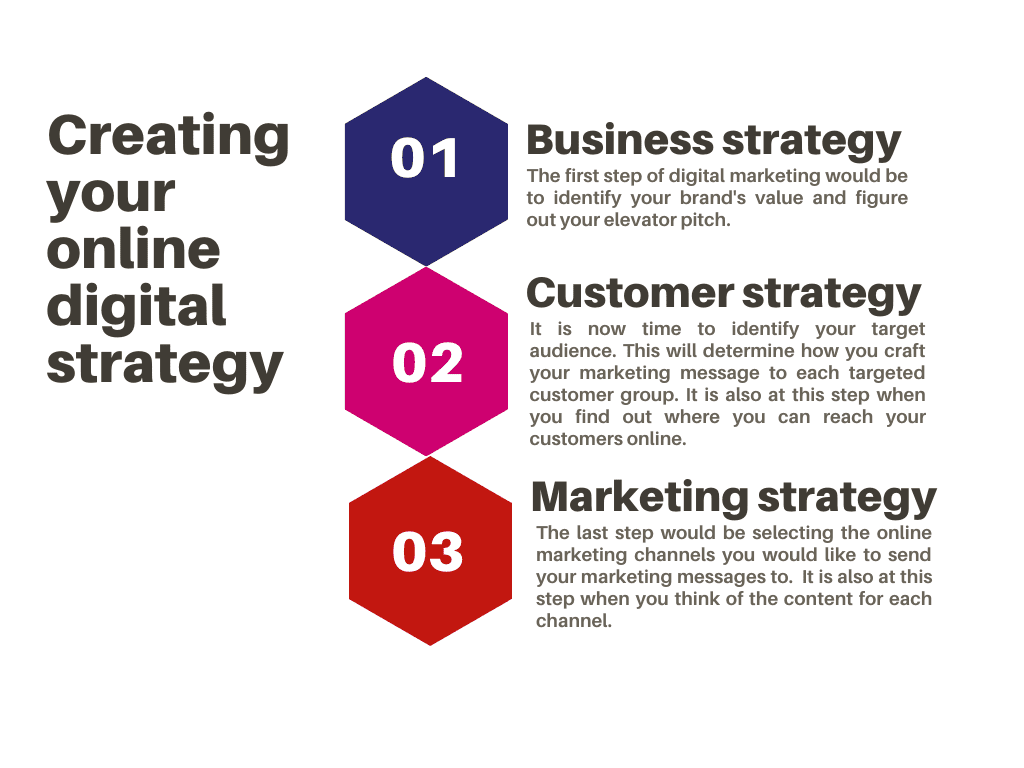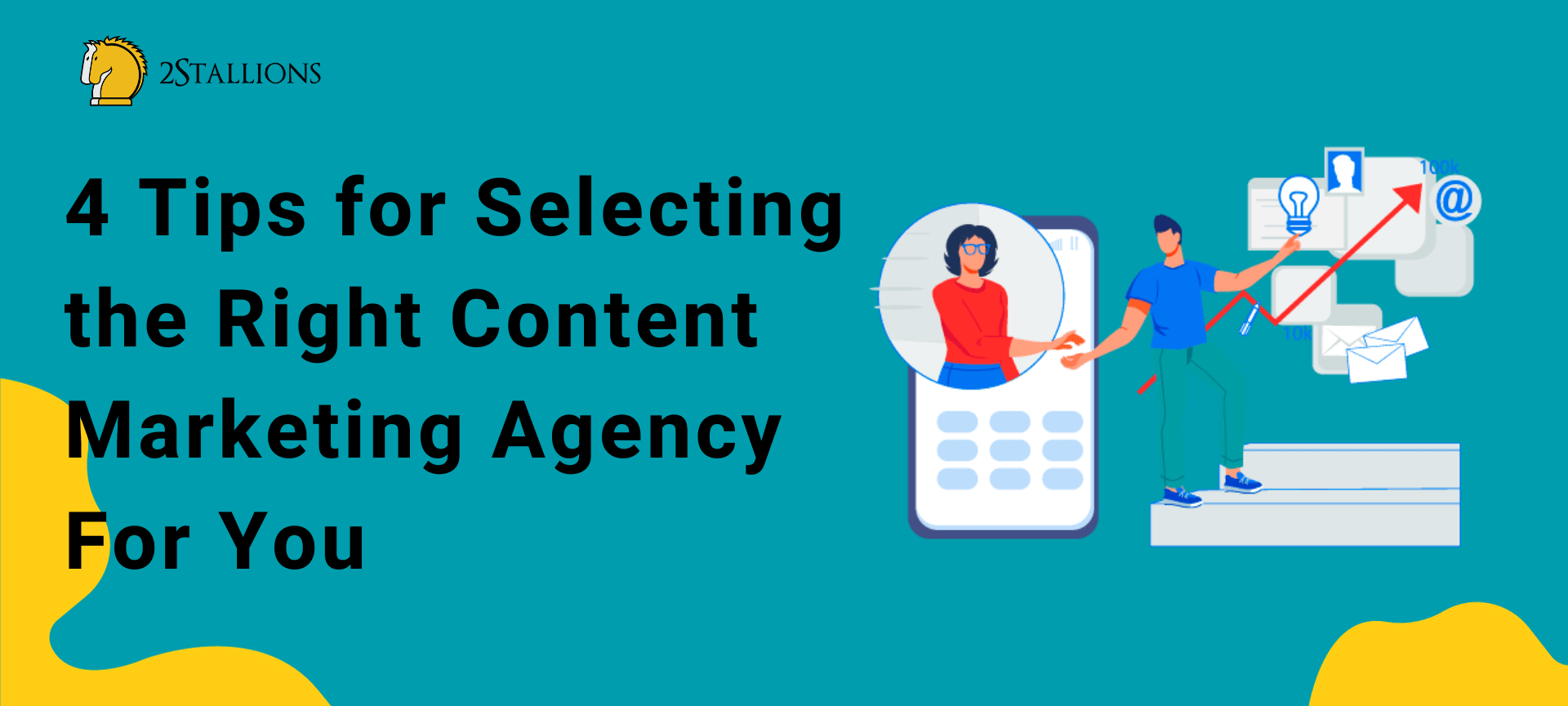Content
SHARE

Consumers are going digital in a big way and businesses need to follow suit. If your company is not yet online, you are likely missing out on a majority of consumers looking for you. A solid digital marketing strategy is an essential piece for building a successful online presence.
A strategy provides your business with a digital direction and goal. It may even reveal opportunities to expand your reach. In fact, companies with a clear digital marketing plan see a 60% faster growth than those without any plan. So how can you kick start your own digital marketing strategy?
Kickstart Your Digital Marketing Strategy
The key to successful online marketing is to build a dedicated strategy that results in a strong return on investment (ROI). Marketing is iterative so it is good to keep your strategy simple. You can always reference and refine it as you go along.
The marketing strategy we recommend is a 3-step process.
You can define and structure your digital strategy in an effective way by breaking down your online marketing plan into this 3-step process.
1. Business strategy
The first step to an online marketing strategy is to understand your own business, and the market surrounding it. You begin with a review of your company’s strengths and competitive advantage. These are distinct values that differentiate you from your competitors.
This exercise also illuminates areas you should focus on to market your business. So what makes up the business strategy?
a. Mission statement
Start with your mission statement. It should be a one-sentence summary that defines what your company does.
b. Objectives
Objectives refer to organizational objectives that are necessary to keep the business running and to maintain your brand identity.
c. Value proposition
Value proposition is about your company’s unique selling point or the competitive advantage that you have over your competitors.
d. Elevator pitch
An elevator pitch would be a short summary of your brand’s value proposition. It will be a short sentence that concisely expresses your brand’s value proposition.
Here is a sample of a business strategy worksheet filled in for a fictitious brand called “H+ Sports”.
After you create your business strategy, you should have a fundamental understanding of your business. The next step is to identify your customers and determine where you find them online.
2. Customer Strategy
A customer strategy helps you identify who and where your customers are. This makes it easier for you to develop marketing messages specific to each group of customers. Tailoring your marketing message for each customer group results in quality leads and conversions.
The key, once again, is to keep it simple. Here is the sample customer strategy worksheet for H+ Sports.
a. Target Audience
One marketing message may not answer the needs of all customers. You should categorize your customers into groups based on a common criterion. For H+ Sports, the target audience is split into 3 groups based on gender and interest. This will make it easier for their business to create specific marketing messages for each group.
a. Audience Goals
Identify the specific targeted audience’s goals. Find out what they are looking to accomplish. Figure out their needs. It is your job to ensure you can fulfill these needs, otherwise, customers have no reason to purchase from you.
b. Audience technology
Finally, with audience technology, you want to identify what channels your audience is using so that you can work on reaching out to them there.
Now that you have identified your targeted customer groups and the potential marketing channels, it is time to develop marketing strategies for each of the channels.
3. Marketing Strategy
The last of the 3-step strategy process is to create a marketing strategy. This will be your guide as you explore different marketing channels. At this stage, you will develop individual marketing plans tailored to the goals of each audience segment.
a. Goal
Your goal needs to be specific to the results you want to achieve from your marketing efforts. For H+ Sports, their goal is to sell H+ nutritional supplements. Hence, the marketing messages for each channel should follow this goal.
b. Channel
Continuing with our example of H+ Sports, let us focus on one of the target groups. Let us females aged 18-35 who are interested in fitness. Here we look at the channels where this group is likely to be found, and hence where we should focus our marketing on. From there, develop a marketing idea for each of the media available: paid, earned and owned
c. Types of Media
Paid media is essentially you paying to promote content. For earned media, it is usually a combined result of strong organic rankings on the Search Engines and content distributed by the brand. Owned media is any web property that you can control.
It is up to you to decide the type of content you want to publish on each channel. Remember to push out content that will help you engage the audience best on each channel. Once you are done crafting the marketing content for each channel, you are good to go. At this stage, you would have created a cohesive digital strategy that will work for you.
Wrapping Up
Developing a marketing strategy is an iterative process, not a plan set in stone. As your customer behaviour continues to change, your business will have to adapt the strategies it adopts.
You can stay ahead of the competition with continued research of your market and customers. Always compare your business relative to your competitors. Gain an advantage by being the first to reach customers and stay relevant to the marketing channels available to you. This will ensure your business maximizes all opportunities to gain the best return on investment (ROI).
Ready to enhance your online presence? Look no further than 2Stallions – Digital Marketing Agency. Our experts will light up your website, reel in a bigger audience, and connect you with your perfect market. Partner with us for epic success!


















